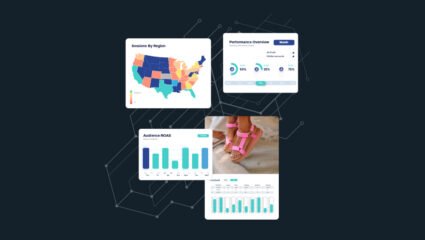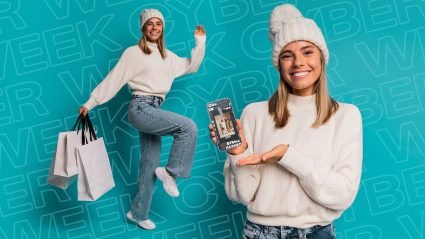A strong performance creative strategy requires deep knowledge and understanding of what’s truly resonating with audiences (and what isn’t), so you can continuously optimize campaigns to make the greatest possible business impact.
But determining which factors play a critical role in driving success isn’t always a straightforward path.
To help your brand effectively extract campaign learnings and iterate success in a rapidly evolving market, you need to have an agile, standardized testing process in place.
First and foremost, we’d like to highlight the importance of building your creative ads with a platform focus. If you’ve ever been tempted to apply a “one-size-fits-all” approach to your performance creative strategy—think again.
And that doesn’t just mean getting the different ad specs right. Each channel also has very distinct audiences and use cases. Understanding the nuances of each platform and what users expect to see there are important considerations in your ad designs.
So how do you scale your creative testing to access those insights and level up your performance? Our experts have put together a six-step process to scaled creative testing that will get you where you need to go.
1. Conduct a creative audit to assess where you are now
The most important part of developing your creative testing strategy starts with completing a creative audit to understand what’s working with your current strategy, and which areas could be improved.
So how can you tell if your creative is successful?
It seems pretty straightforward: look at the data. Did your campaign get the results you wanted? Did conversions skyrocket? Did click-through rates go through the roof? Was engagement higher than before?
But hard metrics aren’t the only way you can tell if you’ve produced great campaigns. There’s a more subjective side to measuring success that has more to do with the overall impression your work leaves—because well-executed creative lingers long after your ads stop showing up in newsfeeds.
Here are some other important factors (and questions) to consider beyond the numbers:
- Concept: A successful concept includes an underlying idea or narrative that ties your work together and helps your audience connect with your brand on a deeper level.
- Questions to ask about concept:
- Does it resonate on an emotional level? Does it evoke something that feels genuine?
- Is it original? Does the work stand out from the competition?
- Is the concept “campaign-able”? Is it a big enough idea to take into different media, span across different nuances of an audience, and last for more than a few months?
- Questions to ask about concept:
- Messaging: Strong messaging conveys a deep understanding of your customers’ passions and motivations, but it shouldn’t don’t drag on and on. Instead, get right to the point, create a clear path forward, and make it easy for your audience to continue engaging with your brand.
- Questions to ask about messaging:
- Is it positioned uniquely? Is it original and engaging, or has it been said a thousand times before?
- Does it sound like your brand? Does your messaging have a strong, recognizable voice?
- Is there a clear takeaway? Can your audience easily take the next step without the need for mental acrobatics?
- Questions to ask about messaging:
- Look and Feel: Your ad’s design is a way to visually entice and engage audiences through smart, innovative, and inspiring creative while still staying true to your brand. Don’t just follow the trends: chart your own course and create work that’s uniquely yours.
- Questions to ask about look and feel:
- Is it well executed? Is it visually appealing and balanced? Is there too much going on (or too little)?
- Does it direct viewers’ attention? Can it keep your audience engaged while driving momentum forward?
- Can you tell who it’s for? Is it tailored to your audience, or does it come off like a shot in the dark?
- Questions to ask about look and feel:
2. Lean on historical data to determine the best type of creative test to run
After you’ve completed an audit, you need to collate and summarize your learnings from any creative tests that you’ve previously conducted. This will help inform your future testing strategy and determine what types of tests are most suitable for your goals.
One of the most effective performance creative tests we recommend is split testing. This is also known as A/B testing or single variable testing, and it’s long been a favorite method for marketers to discover which ad optimizations yield the strongest results.
By testing the creative variables within your ads, you can quickly identify which elements impact your performance, and leverage the winning results to drive differentiation and iterate success.
For example, here are some basic split tests for ad imagery and messaging types:
- Imagery Testing:
- Lifestyle vs. Features
- Professional vs. User-Generated
- Photography vs. Illustration
- Text Overlays vs. Price Promos
- GIF vs. Static
- Narrative Testing:
- High-Arousal/Emotional: Surprise + Humor vs. Happiness + Admiration
- Rational: Value + Unique Offerings vs. Problem + Solution
- Brand Positioning: Best in Comparison vs. #1 in Customer Service
3. Develop and align on creative testing questions
Next, create test questions based on what you’re trying to learn and the outcome measures that will determine success.
Think about what you’re trying to accomplish with your campaign, and the metrics/KPIs that you can track and measure to prove that your ad creative had an impact on your business’s bottom line.
For example, if your goal is to expand your prospecting pool to drive higher conversions through video, you may want to track specific engagement metrics like watch time, views, likes, shares, or comments. If you’re trying to retarget high-intent audiences who have previously purchased, your KPI might be cost per acquisition (CPA).
As a general best practice, you can always start with one of these creative strategy test questions:
- Which story/idea/creative concept drives the best-desired action/goal of the campaign?
- Which concept differentiates the most from past campaigns, industry standards, or direct competitors?
- What type of ad style is best suited for this concept? (e.g. Live-Action Explainer, UGC, Text-Animated, etc.)
4. Craft a strong test hypothesis
One way you can ensure your creative test will produce valuable learnings and insights is by centering it around a strong hypothesis.
Your hypothesis should focus on specific assumptions and outcome measures you can clearly prove or disprove through creative tests. In other words, it’s an informed hunch around what position or creative concept will drive results.
So how do you form a succinct, measurable test hypothesis for your ad creative?
- Think of it as a proposed statement: a hypothesis is not fact, and should not be argued as right or wrong until it is tested and proven against specific outcome metrics.
- Base it on (limited) evidence: Your hypothesis should be informed by as much relevant knowledge and insights as possible. This should include audience data, past campaign research, and analysis of the current challenges you face.
- Make sure it can be proved or disproved: a hypothesis pretty much says, “I think by making X change, it will cause Y effect.” So, based on your results, you should be able to say “this is true” or “this is false.”
Your hypothesis can be used as a starting point for deeper campaign exploration and investigation. You should put it together and agree on it before you take any further tactical measures because it needs to guide the wireframe or design of your creative test. It should ultimately help you hone in on what elements to change, how to change them, and which to leave alone.
5. Build a holistic creative testing roadmap
The next step is to design tests and creative elements based on your hypothesis and what you want to learn. Always keep mobile best practices front of mind and make sure each asset:
- Highlights the expression of your creative variable early on
- Is clearly differentiated from the others you’re experimenting with
- Doesn’t have additional variables that might contribute to differences in results (e.g. is your branding consistent across assets?)
When running multiple creative tests in succession, you should have a plan for how they link together and could influence one another to ensure that your learnings are always relevant and actionable.
Here is an example of a testing roadmap that sets specific campaign goals/objectives, test types, and metrics to measure success:

6. Complete the test and share your learnings
Analyze the results based on the outcome measure you identified in your initial hypothesis to determine which asset(s) performed best against that metric—and if the test confirmed your hypothesis.
Look at secondary metrics for additional learnings. For example, did one asset perform better against a specific audience? The more you can understand the “why” behind the success or failure of an asset, the better equipped you are to decide how to adapt it.
To strategically and creatively determine the next best implementation of your learnings, consider these questions:
- Does a runner-up still show strong performance? Can you leverage it to build out the rest of your campaign?
- If multiple assets are high performers, which asset or direction feels the most creatively fertile?
- Have these learnings uncovered another knowledge gap and new opportunity to betatype through ongoing, intentional creative experimentation?
Remember: when it comes to your creative testing strategy and driving growth, always experiment with fresh, innovative ideas to find out what truly motivates your audience and earns the conversion. You should be constantly running A/B tests, analyzing campaign results, and iterating on the takeaways to drive tangible results that boost business impact.
Creative testing bonus tips:
- Think beyond the individual campaign level. To truly amplify the impact of your performance creative, it’s important to scale tests across campaigns and build out a process to draw insights that apply to multiple channels and ad types.
- Even winning ads can’t run forever. For your ad creative to reach its full potential, you need a constant flow of new information. You should periodically switch out campaigns with fresh creative and start the testing process all over again.
- Move fast and fail forward. Creative risk-taking is part of the joy of performance creative, so don’t be afraid to take a certain amount of risks and experiment with bending your brand rules. Failure is acceptable as long as you bounce back and move forward with a continuous testing mindset.







Responses